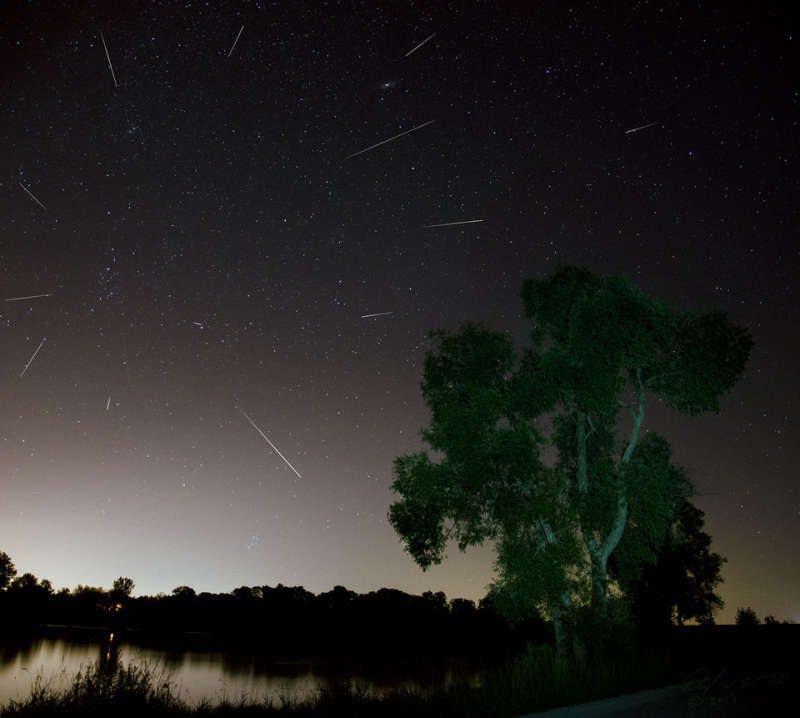Credit & Copyright: Darryl Van Gaal;
Annotation: Judy Schmidt
Explanation:
Where are all of these meteors coming from?
In terms of direction on the sky, the pointed answer is the
constellation of Perseus.
That is why the meteor shower that peaked over the past few days is known as the
Perseids -- the
meteors
all appear to come from a
radiant toward Perseus.
Three dimensionally, however,
sand-sized debris
expelled from Comet Swift-Tuttle
follows a well-defined orbit about our Sun,
and the part of the orbit that approaches Earth is
superposed in front of the Perseus.
Therefore, when Earth crosses this orbit, the
radiant point of falling debris appears in Perseus.
Pictured above,
a composite of 13 early images from this year's
Pereids meteor shower shows many
bright meteors that
streaked
through the sky the night of August 11 near
Oakland,
Ontario,
Canada.
Gallery:
Highlights of the 2013 Perseids Meteor Shower
1999 2000 2001 2002 2003 2004 2005 2006 2007 2008 2009 2010 2011 2012 2013 2014 2015 2016 2017 2018 2019 2020 2021 2022 2023 2024 2025 |
Yanvar' Fevral' Mart Aprel' Mai Iyun' Iyul' Avgust Sentyabr' Oktyabr' Noyabr' Dekabr' |
NASA Web Site Statements, Warnings, and Disclaimers
NASA Official: Jay Norris. Specific rights apply.
A service of: LHEA at NASA / GSFC
& Michigan Tech. U.
|
Publikacii s klyuchevymi slovami:
Perseids - Perseidy
Publikacii so slovami: Perseids - Perseidy | |
Sm. takzhe:
Vse publikacii na tu zhe temu >> | |
